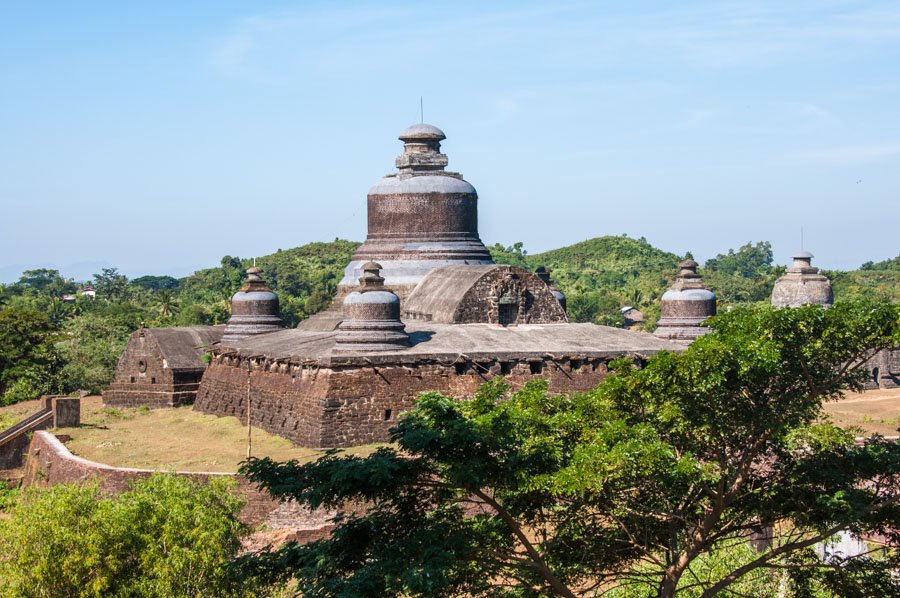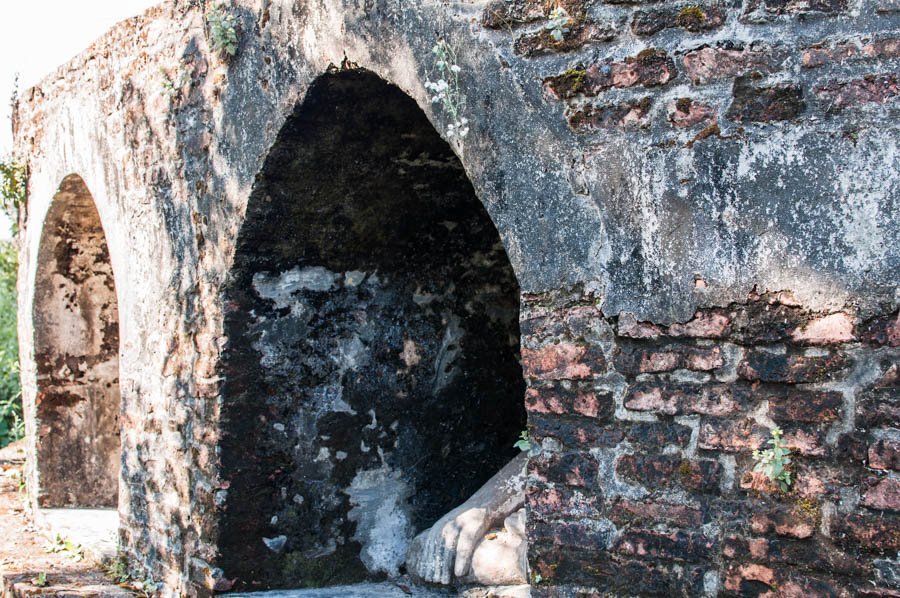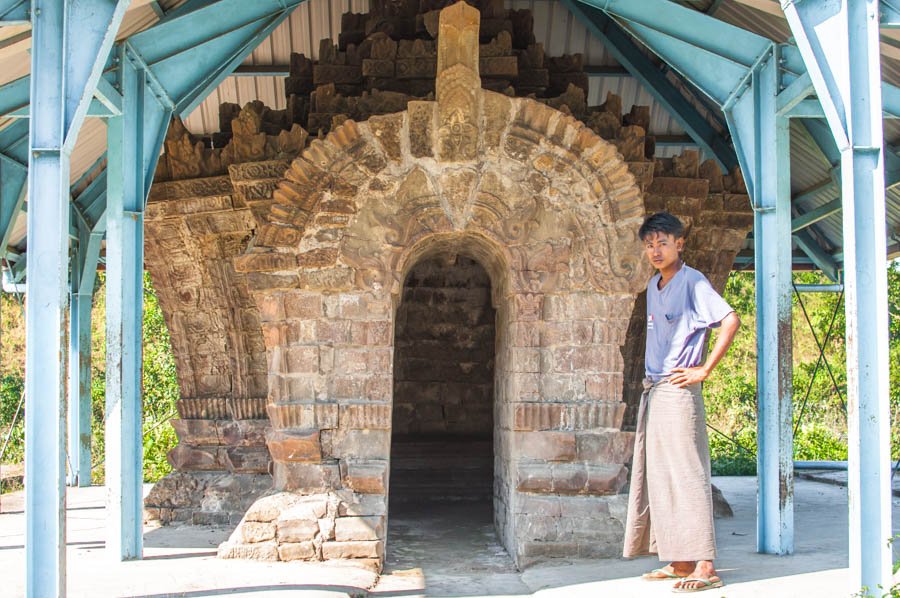Andaw-Thein

Andaw-thein was built during King Sajaka’s reign, 1515-1521. Min Palaung restored it twice, once in 1534 and again in 1542. After that, Min Raza Gri needed a place to put the precious gift of the Buddha’s tooth from Sri Lanka. This happened in 1596. The original form was an octagonal central shrine with two circular ambulatory passages, one closer to the outside the other closer to the inside of the stupa. It is similar in construction to Mahabodhi Shwe Gu built during Mrauk U Kingdom’s First Phase.
A bell shaped stupa crowns the main shrine. A ringed conical spire extends into the sky topped with a delicate lotus shaped finial. Mughal construction is evident in the stupas surrounding the main stupa, similar to multi-domed architecture of pre-Mughal Bengal. Where the passages are vaulted, they are supported by a western architectural standard, half-capitals.
Htu-kan-thein

Htu-kan-thein (Cross-beam ordination hall) looks more like a fortress than a temple. Like most temples here, the interior is dark and mysterious, however, this one seems to be more so. 180 Buddhas, a very auspicious number, include the central seated Buddha and 179 buddha images side by side along the passages. King Min Phalaung built this in 1571, believed by tradition that he built it, on the advice of his astrologers, to dodge a fledgling revolt against him by his officials. The Buddha images are flanked on each side by members of the nobility who donated to the construction of Htu-kan-thein. In fact, they were demanded to donate. This made them “suitably subservient to the king who as a dhammaraja was responsible for the promulgation of the Buddha’s law throughout the land.” [p. 119]
The floor plan is simple, reminding me of a wide bullet shape (actually called apsidal), with one entrance to the east. The middle interior brick structure, running along the entire bullet shape, is open to both sides, creating two passages to circumambulate. Buddha images sit back to back where one passage is visible to the other. One stairway leads up to the central core where another set of stairs leads to the meditation hall and the central Buddha image, lit by clerestory windows.
Phara-Oux

The 29 live sized Buddha images in this circular plinth, are all identical, all calling the earth to witness. Going around the circular stupa, the buddha images all face outwards in all directions. Phara-oux (or Phara Ouk). The upper structure was destroyed and it is suggested by Dr. Gutman that the architect unsuccessfully tried to build a new kind of superstructure that didn’t quite work out. That reminds me of the collapse of Hartford Coloseum’s space frame in the winter of 1978, when I was living there and studying architecture.
Phara-oux was built again by King Phalaung in the same year that Htu-kan-thein was built, 1571. These are both right in the beginning of his reign which lasted until 1593. The photos here show the restored structure above the original circular plinth that was all that was left behind.
Pitaka-Taik

Pitaka-taik, or Pitaka Library, was the last stop on our temple visiting journey on our second day. By the time we got there my camera was full of dust and the lens filter was cracked and stuck on. It probably saved my lens, I finally got it off later that night. We were carted around in the back of a jeep which is alot more comfortable than some ways to get around. Our young, hard rock loving driver didn’t do any talking until we got here. He wanted to show us everything about it. In 2011, when we were there, it was surrounded by scaffolding and covered with a corrugated roof.
This library was built in 1591 by King Phaloung, to properly store Buddhist scriptures received by the king from Sri Lanka. It is built entirely of stone and is the only one of 48 pitaka libraries in Mrauk U. As you’ll see in the photos, the outer walls are beautifully carved floral and geometric patterns and shapes carved deep (about 15 centimeters) into the stone.
Resources for this article incluce Gutman, Pamela – 2001, Burma’s Lost Kingdoms: Splendours of Arakan, Orchid Press, Bangkok and Famous Monuments of Mrauk-U, November 2007 by Myar Aung.
